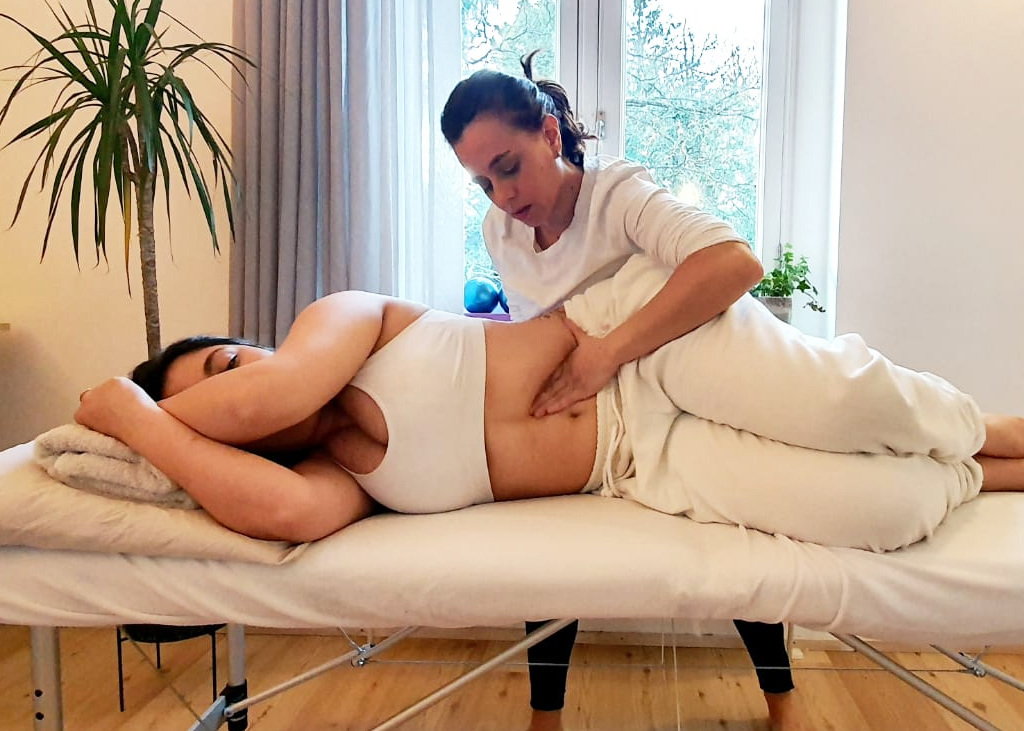A 28-year-old female, shop manager who practiced a lot of sports like swimming, running, weight training and skating, consulted me for deep dyspareunia (pain during intercourse) which she had had for more than 2 years.

She had received treatment previously including the application of manual therapy in the pelvic floor muscles and by doing reverse kegels, gluteus and relaxation breathing exercises. She improved with the manual therapy, but when she was not having this treatment the pain came back.
In her initial assessment, she told me that she fell on her left side, skating five years ago. She spent five months with pain in the left side of her lower ribcage and left hip.
In the physical assessment, the findings were that her lower ribcage had translated to the right with a rotation to the left and also with pelvis torsion to the left. (This means the body wasn’t optimally aligned which sometimes provokes compensation in the way that the body works, so that there is weakness in some muscles and some other muscles are overworked.)
In this case, she had hypertonic (tight overworked) pyramidal and obturator muscles on the right side due to overload and weakness on the left side due to the non -optimal alignment of the ribcage. The patient found it difficult to expand the left side of the ribcage because this side of her diaphragm muscle was tender and sore.
I found that the ribcage was the primary driver to start treating the patient; we used manual and visceral therapy in the left hand side of the ribcage and abdomen, some breathing techniques to improve mobility in the thoracic spine and postural re-education.
When the alignment of the body began to improve, the pain during intercourse started to decrease because balance was being restored and we could deal with the second driver, the pelvis, to improve strength in the left gluteus. The patient was almost pain-free after four months of treatment.
